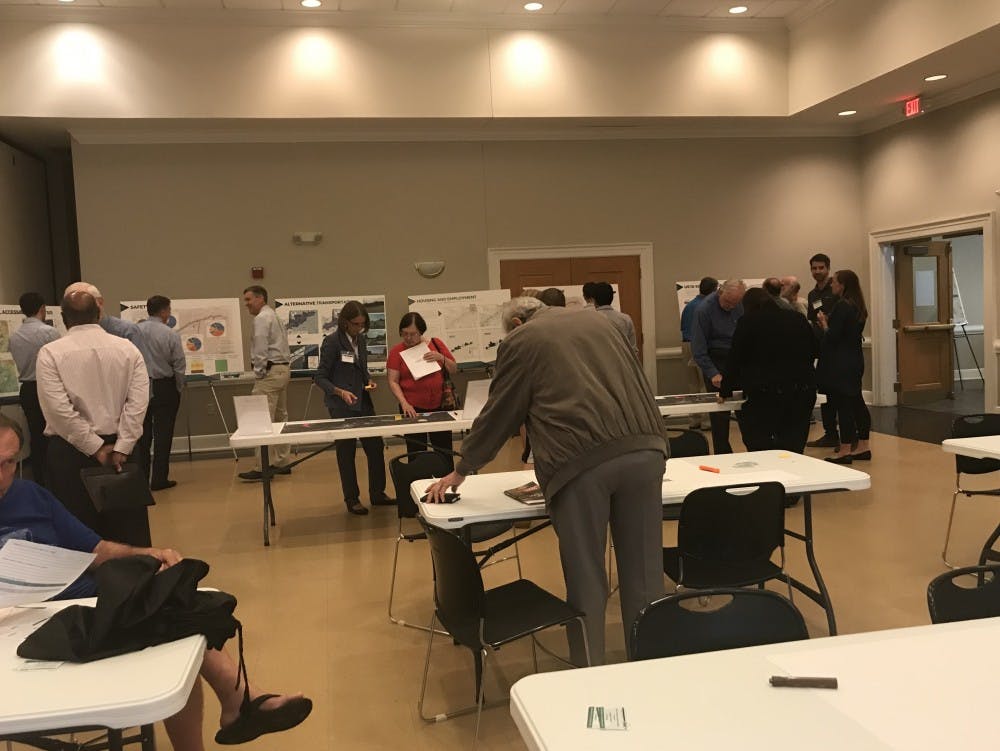As the Triangle area has grown over the past decade, so has its traffic. Congestion during morning and evening commutes has resulted in time delays and collisions on U.S. Route 15-501.
To combat increasing traffic problems, residents of Chapel Hill and Durham met at the Church of the Good Shepherd on Tuesday to partake in a public workshop designed to seek input on the multi-modal traffic study of the U.S. 15-501 route. This is the first step in the process to update the 6.5 mile corridor between Ephesus Church Road in Chapel Hill to University Drive in Durham.
Erik Landfried, transit service planning supervisor for GoTriangle, stressed that this workshop was more about the community’s opinion rather than the planning committee’s.
“A lot of this is based on what the public would like to see, and then we can implement it as best we can," Landfried said. "We do talk about a lot about our own vision, but we’re here today to hear what the public’s opinion is.”
The workshop was led by the Durham Chapel Hill Carrboro Metropolitan Planning Organization (DCHC MPO) and the North Carolina Department of Transportation (NCDOT). It included a visioning activity, where residents proposed ideas of improvements and had questions answered. Many residents proposed ideas to manage congestion by Rams Plaza and left turns onto 15-501.
The workshop also gave residents the opportunity to pinpoint specific areas on the corridor that experienced significant traffic problems as well as rank their priorities for the corridor in order of importance. The results showed that the community was most concerned about increasing safety, improving travel time reliability and providing opportunities for travel by bicycling and walking.
The most recent transportation master plan was created in 1994. Updates to this plan will incorporate the needs of a wider range of commuters, including bikers and pedestrians. Mike Bruff, transportation modeler for the City of Durham, serves as the project manager for the study and hopes that it will be revised to fit in with the new developments in the area, such as the light rail.
“What we want to do is try to get people’s ideas of how we need to accommodate multi-modal transit,” Bruff said. “Then in the later fall is when we’ll come back with different alternatives of what we think will work to accommodate the traffic.”
Leta Huntsinger, senior technical principal transportation planning lead for the Carolinas at WSP, said that this study is necessary to create a vision for the corridors that is supported by the community and will benefit future generations. In order to increase awareness of the US 15-501 Corridor Study, Huntsinger noted that social media has been a fundamental method in reaching out to younger residents in the area.



